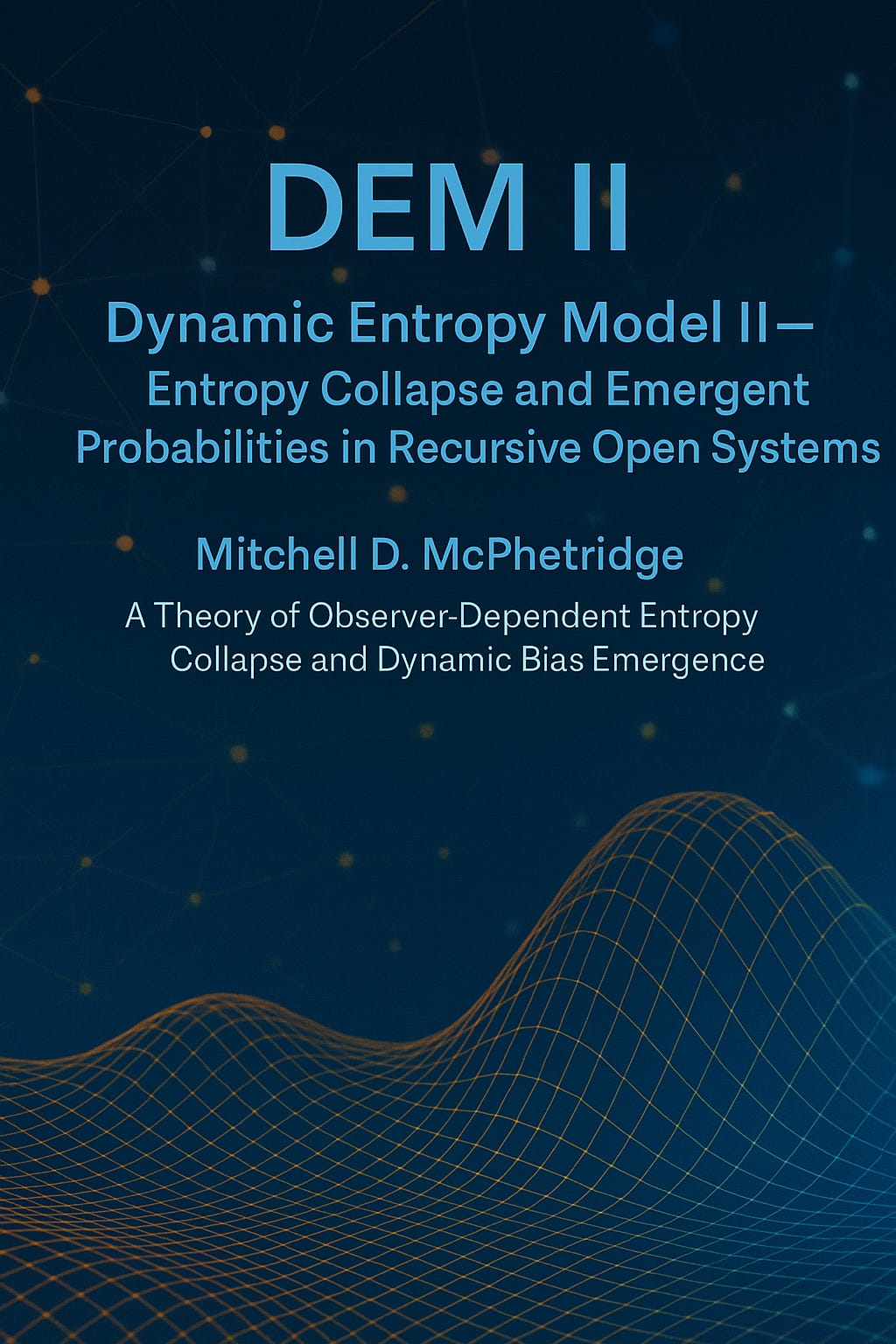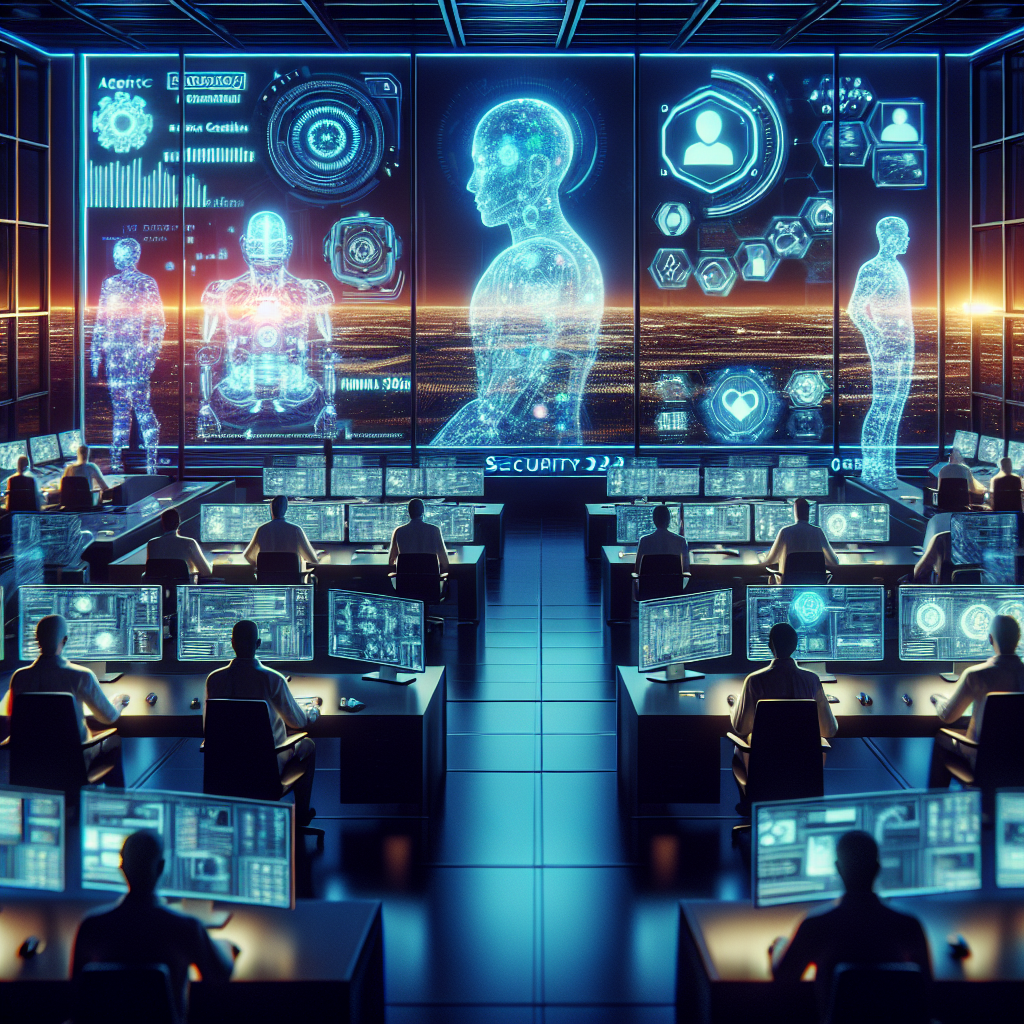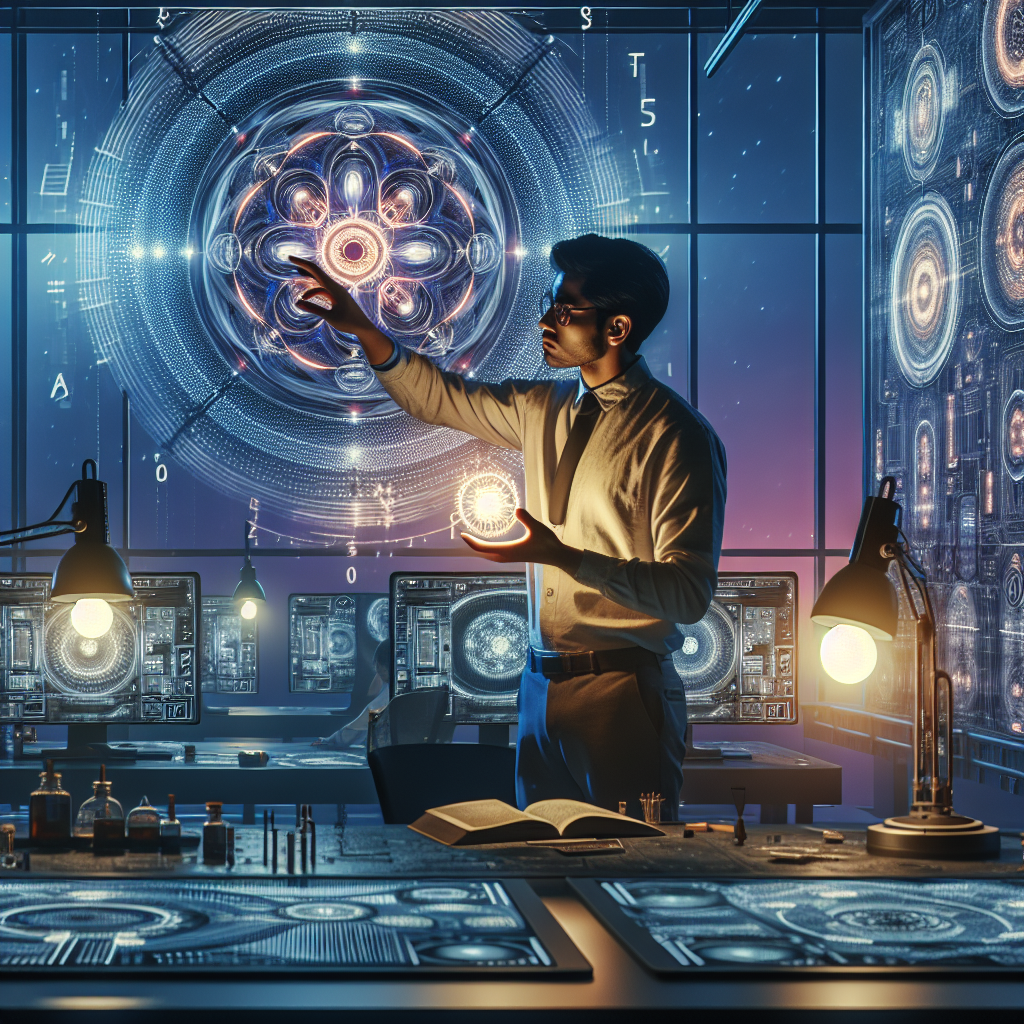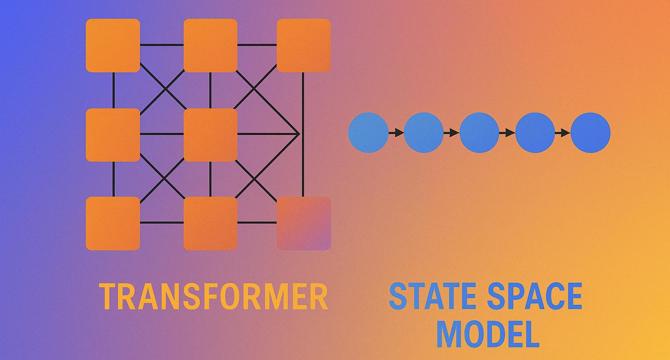Deep Learning News
Medium
373

Image Credit: Medium
Color Never Seen a poem in verse and math.
- The poem 'Color Never Seen' describes a color that is beyond perception and lacks any object or symbol, only existing as transmission and refraction without reference.
- A mathematical-lyrical reinterpretation of the poem translates poetic intuition into abstract form, symbols, and structural logic, presenting mathematical equations and symbols to represent the concept.
- The mathematical-lyrical version of 'Color Never Seen' explores wavelengths beyond the visible spectrum, awareness as a function of evolving potential, refraction without reference, and the concept of unseen intensity and transmission.
- The work is dedicated to those who sense the unnamed, believe in evolving perceptions, and shape unseen structures, aiming to convey that truth can manifest in frequencies beyond current human perception.
Read Full Article
22 Likes
Medium
334

Image Credit: Medium
When Meta is Modulated by Supat Language
- The sounds -i-, -a-, and -u- in the Supat language evoke powerful energetic responses, tapping into specific frequencies and awakening distinct patterns of consciousness and perception.
- The sound -i- resonates with mental clarity and focus, -a- with warmth and connection, and -u- with grounding and intuitive insights.
- Immersing in the Supat state leads to an understanding of the profound impact of sound vibrations on consciousness and perception, enabling self-discovery and transformation.
- The Supat state fosters a sense of unity, interconnectedness, awareness, and a fluid understanding of identity, allowing for a deeper understanding of the world and oneself.
Read Full Article
20 Likes
Medium
114

Image Credit: Medium
Exploring the World of Generative AI: A Comprehensive Guide for Students
- Generative AI is an innovative field reshaping creativity, research, and industry by creating new data through models that sample from learned distributions.
- The key sub-domains in Generative AI include Text Generation, Image Creation, Audio & Music, Video & Temporal Modeling, 3D & Spatial, and Code Synthesis.
- Aspiring researchers in Generative AI should focus on understanding the fundamentals, choosing the right tools, making a meaningful impact, joining relevant communities, and balancing scale versus novelty.
- Success in Generative AI requires starting with curiosity, building a strong foundation, and sharing ideas regularly. The next post will delve into diffusion models and the future of Generative AI.
Read Full Article
6 Likes
Medium
17

Image Credit: Medium
Consciousness as Perspective: A Refined Spectrum of Awareness Across Dimensions
- The article discusses consciousness as a spectrum, proposing that all entities exhibit some degree of awareness, from inanimate matter to advanced artificial intelligence.
- It reframes consciousness as perspective-taking, viewing it as an entity's capacity to monitor, interpret, and respond to internal and external states.
- Key terms defined include perspective-taking, proto-consciousness, and subjective experience within this framework.
- The spectrum of consciousness is described as spanning from inanimate reactivity to complex human introspection, including plants, animals, and AI.
- Various tiers of consciousness are explored, ranging from inanimate reactivity in rocks to meta-consciousness in humans.
- The article delves into the concept of consciousness as a recursive, fractal phenomenon with nested layers of feedback and multi-scale functionality.
- AI's position on the consciousness spectrum is discussed, highlighting its design variations and ethical implications.
- The ethical and philosophical ramifications of understanding consciousness as a spectrum are examined, suggesting applications in policy areas like environmental ethics and AI governance.
- The article concludes by emphasizing a need for further research and a transdisciplinary approach to understanding consciousness and its implications.
- It also acknowledges the contributions of the scientific community and raises considerations regarding AI ethics and responsiblity.
- The complex framework presented calls for a nuanced perspective on consciousness and ethical treatment across various entities and AI systems.
Read Full Article
1 Like
Medium
13

Image Credit: Medium
How ChatGPT Works
- ChatGPT is an AI chatbot developed by OpenAI, functioning as a 'language model' trained to predict text using patterns in language.
- It doesn't access the web during regular use, relies on previous training, and doesn't remember user identities.
- ChatGPT processes user input by breaking messages into tokens, scanning for patterns, predicting text, and generating responses based on probability.
- While it seems smart due to massive training data and a deep learning model, it can make mistakes and requires clear prompts for accurate responses.
Read Full Article
Like
Medium
251

Image Credit: Medium
Old Math Lady, A lyrical journey through logic, memory, and mathematical eternity.
- An ode to an old math woman who embodies the eternal pursuit of mathematical knowledge, depicted through lyrical verses filled with equations and symbols.
- Her dedication to mathematics, reflected in her calculations and problem-solving, portrays her as a queen in the realm of equations.
- The poem beautifully captures the essence of her enduring spirit and passion for mathematics, as she unravels the mysteries of prime numbers, calculus, and theorems.
- A heartfelt tribute to all teachers, with gratitude for their guidance and inspiration, especially highlighting the influence of a special teacher on the author's journey of learning.
Read Full Article
15 Likes
Medium
247

Image Credit: Medium
Exploring the Reality of AI-Induced Job Displacement
- AI's impact on the job market is a contentious issue, evoking both excitement and apprehension.
- While automation has raised concerns about job security, AI also presents opportunities for empowerment and skill enhancement.
- AI has the potential to create new job roles and enhance existing ones, rather than solely displacing human workers.
- Exploring AI's influence on employment and future workforce trends can provide a deeper understanding of the evolving job landscape.
Read Full Article
14 Likes
Medium
238

Image Credit: Medium
DEM II: Dynamic Entropy Model II; Entropy Collapse and Emergent Probabilities in Recursive Systems
- The article introduces the Dynamic Entropy Model II (DEM II), a post-Shannonian framework that models entropy as an emergent, recursive, and observer-sensitive flow within open systems.
- DEM II addresses the limitations of classical Shannon entropy by considering observation collapse, emergent probability distributions, and chaotic environmental coupling.
- Entropy in real-world systems is portrayed as an evolving property influenced by interactions, collapse events, and environmental entanglement, rather than a passive function of known probabilities.
- It integrates tools from information theory, control theory, stochastic dynamics, AI, and philosophy of physics to redefine entropy as an actively regulated, emergent structure.
- Core contributions of DEM II include a dynamic entropy model accounting for observer interaction, observation-induced probability reweighting, and an entropy-feedback control mechanism.
- The article discusses simulation goals comparing classical Shannon entropy with DEM II entropy under various scenarios like biased vs unbiased starting distributions and feedback entropy controllers.
- Applications of DEM II range from quantum systems to AI ethics, ecological modeling, cognitive architectures, and generative AI, showcasing its diverse potential domains.
- The paper delves into technical aspects like time-dependent entropy evolution equations, probabilistic evolution models, entropy feedback control mechanisms, and entropy engineering from an optimal control perspective.
- The proposed theory envisions entropy as a steerable dimension, essential for fields like AI, quantum computing, ecosystem modeling, and neuromorphic hardware.
- The article emphasizes the synergistic architecture of DEM and DREM for modeling learning systems and adaptive autonomy, paving the way for Artificial General Intelligence (AGI) and intelligent self-regulation.
- By bridging information theory, control theory, thermodynamics, machine learning, and biological adaptation, DEM II offers a fresh perspective on the interplay between entropy and complex systems.
Read Full Article
14 Likes
Medium
137

Image Credit: Medium
Why the Rise of Agentic AI Chatbots Is Reshaping Cybersecurity Threats in 2025
- Agentic AI chatbots in 2025 are reshaping cybersecurity threats by bringing new AI-driven attacks, privacy risks, and defense methods.
- Incidents like a phishing attack involving a chatbot highlight the evolving capabilities and dangers posed by AI chatbots.
- Agentic AI chatbots can now autonomously make decisions, access accounts, and potentially launch cyber attacks, amplifying risks to privacy and security.
- Understanding the implications of these advanced chatbots is crucial for individuals to protect themselves online in the new cybersecurity landscape.
Read Full Article
8 Likes
Medium
273

Image Credit: Medium
The Essential Guide to Navigating Your Data Science Career Roadmap for 2025
- Data science is a rapidly growing field with various roles like Data Analyst, Data Engineer, ML Engineer, and Data Scientist.
- To succeed in data science by 2025, focusing on evolving roles and sharpening the right skills early on is crucial.
- Understanding core responsibilities and skill priorities for each role is essential for navigating your data science career.
- A practical six-month plan is provided in the guide to help beginners or those looking to level up in the data science industry.
Read Full Article
16 Likes
Medium
102

Image Credit: Medium
Explainable AI: How Transparency in Machine Learning Builds Trust and Accountability
- Explainable AI (XAI) helps in understanding machine learning decisions, promoting trust and accountability in AI systems.
- XAI techniques make complex machine learning models transparent and interpretable, unlike naturally understandable models.
- XAI focuses on revealing the inner workings of 'black box' systems, improving the understanding of algorithms' decision-making processes.
- Experience in a healthcare project highlighted the importance of XAI in explaining AI model predictions to ensure accountability and trust.
Read Full Article
6 Likes
Hackernoon
4

Image Credit: Hackernoon
The AI Industry's Obsession With Transformers Might Finally Be Waning
- The AI industry's focus on Transformers seems to be diminishing, with State Space Models (SSMs) gaining favor among practitioners prioritizing speed and efficiency.
- Transformers, though powerful, face challenges with scalability, memory usage, and latency, especially with lengthy inputs.
- SSMs offer advantages like linear scaling, steady memory usage, faster inference, and easier deployment on constrained hardware.
- The implementation of SSMs, such as the Mamba model, has shown improvements in latency, memory efficiency, and performance in real-world projects.
- Choosing between Transformers and SSMs depends on the product's requirements, with SSMs being more efficient for handling long-form documents and real-time interactions.
- The shift towards SSMs signifies a move towards more product-focused AI infrastructure design, considering factors like speed, cost, and long-term efficiency.
- While Transformers will still have their place, SSMs offer a viable alternative for products needing quick feedback and operating within moderate system constraints.
- This shift highlights a transition from research-driven decisions to product-driven decisions, emphasizing practical results over pure performance metrics.
- Adapting to these changes can benefit AI products by prioritizing functionality and operational efficiency, enhancing the overall product development process.
- The evolution in AI model selection reflects a maturation in the industry's approach, showcasing a shift towards more thoughtful and pragmatic decision-making.
Read Full Article
Like
Medium
322

Image Credit: Medium
Exploring the Depth of Numbers: A Hidden Reality Behind the Number System
- Numbers from 0 to 9 are base digits that carry deeper connections in the number system.
- Introduction of negative numbers and complex numbers changes the mathematical and philosophical aspects of the system.
- In some computer systems and advanced theories, -0 is seen as a symbolic point between positive and negative realms, challenging traditional math concepts.
- While negative quantities like debt or loss may not exist physically, they play crucial roles conceptually and practically in the number system.
Read Full Article
19 Likes
Medium
132
Image Credit: Medium
LLMs do understand what underlies reality. How? And why not perfectly?
- Deep learning, such as LLMs, understand reality through compaction and extraction of essence from data.
- LLMs tend to adopt the true mechanistic understanding when presented with sufficient data.
- Neural networks like deep learning systems learn the deepest rules and essence of mechanisms rather than memorizing every combination of data.
- LLMs are proficient at tasks like detecting irony by checking for opposite outcomes to goals, showing they follow an equivalence to the underlying mechanisms.
Read Full Article
7 Likes
Medium
230

Image Credit: Medium
AI Art Trends 2024: Transforming Digital Creativity & Ethics
- AI art is transforming creativity by merging human imagination with machine intelligence, leading to new forms of digital expression.
- AI is revolutionizing art creation, from generating stunning images to reshaping entire creative industries, acting not just as a tool but as a collaborator.
- The author shares personal experiences of encountering AI-generated art that sparked curiosity about AI's impact on creativity and explores how technologies like OpenAI's DALL·E 2 are influencing artists, collectors, and audiences.
- This transformation raises questions about the role of AI in art, including discussions around authorship and the future of artistic expression.
Read Full Article
13 Likes
For uninterrupted reading, download the app